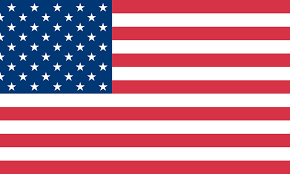What Is a Bullet Journal and How to Start One?
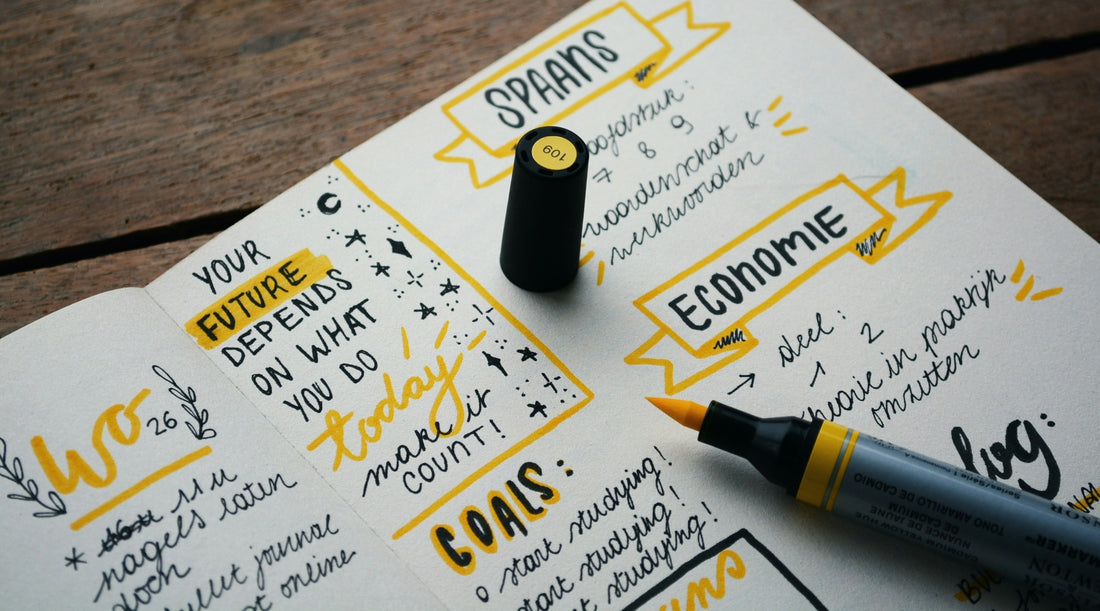
In an era where productivity and self-improvement are paramount, the bullet journal has risen to prominence as a multifaceted tool for organizing one’s thoughts, tasks, and goals. It’s a testament to the system's adaptability and effectiveness that you can find bullet journals peeking out of totes at coffee shops, boardrooms, and university halls alike.
What is a bullet journal?
A bullet journal, often referred to as a BuJo, is a customizable and flexible personal organization system. It combines elements of a planner, diary, to-do list, and sketchbook into a unified format. A bullet journal stands out with its use of rapid logging, which incorporates symbols and shorthand codes to organize information efficiently. Here are some of its salient features:
- Modularity: The bullet journal is made up of discrete modules or "collections", which allows users to mix and match elements to suit their personal needs.
- Flexibility: Unlike pre-printed planners, the bullet journal does not waste space. You use as many or as few pages as needed for daily, weekly, or monthly logs, adjusting to busier or quieter times.
- Creativity: While the original system is quite minimalist, many people customize their bullet journals with sketches, colors, stickers, and different hand lettering to make them visually appealing and enjoyable to use.
Why do you need a bullet journal?
The need for a bullet journal arises from the desire to impose order on the chaos of daily life and enhance personal productivity.
Bullet journals help track and prioritize tasks, events, and personal reflections, serving as a physical record of one’s accomplishments and aspirations.
Potential Contents of a Bullet Journal
A bullet journal can include a wide variety of content, depending on your personal needs, goals, and preferences. Here are some potential sections and elements you might find in a bullet journal:
- Events &Tasks: Use Future, Monthly, Weekly, and Daily logs to manage appointments and responsibilities.
- Habit Trackers: Monitor progress in personal habits like exercise, reading, or meditation.
- Notes: Capture fleeting ideas, quotes, or observations, which can be flexibly applied to both academic and professional settings.
- Collections: Thematic lists like books to read, bucket lists, or favorite recipes in consideration of your personal needs.
- Reflections: Dedicate space for introspection, and reflect growth, and changes.
- Signifiers: Additional symbols that give context to your bullets at a glance. For example, an asterisk (*) might signify priority, while an exclamation point (!) denotes inspiration or great ideas.
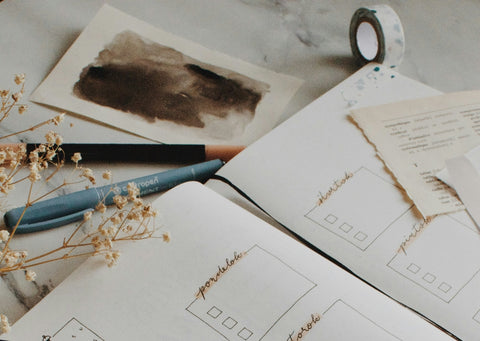
How to start a bullet journal?
Starting a bullet journal is a very personal process, and there is no one-size-fits-all approach. However, there are some basic steps you can follow to get started. Here's a simple guide:
Step 1: Start with the Index
The index in a bullet journal plays a critical role in the functionality and organization of the system, allowing you to quickly locate specific entries.
Reserve the first several pages for your index. This will be where you list the contents of your journal and their page numbers for easy reference.
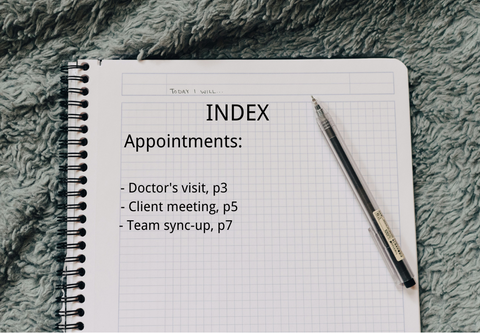
Step 2: Learn the Bullet Journal Notation
The bullet journal symbols provide a standardized shorthand without writing long sentences or explanations, helping you jot down information quickly.
Embrace the minimalist notation system. Tasks, events, and notes each have their symbols, making your entries swift to pen and easy to understand.
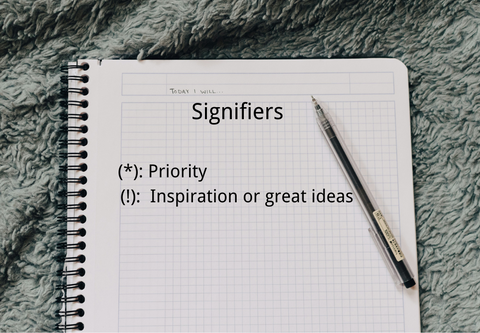
Step 3: Customize as You Go
A bullet journal is a deeply individualized instrument, granting you the freedom to tailor your content and layout, and finding your style.
Add collections like meal planners, habit trackers, or reading lists as you identify the need for them to show the unique mix of logs, collections, and ideas present in your journal.
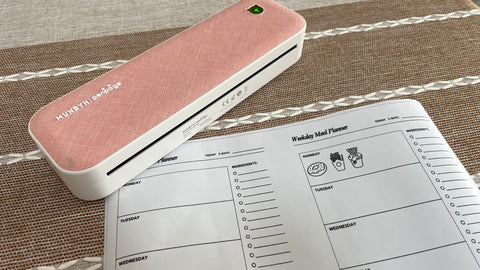
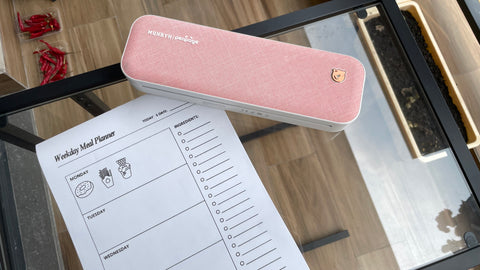
Step 4: Review and Adapt Regularly
Reviewing your journal allows you to monitor the progress of your tasks, goals, and projects. It helps you see what you have accomplished and what still needs attention.
At the end of a day, week, or month, review what you've accomplished and migrate any incomplete tasks forward.
Step 5: Maintain Your Bullet Journal
Maintaining your bullet journal ensures that it remains an effective, adaptable, and satisfying tool that supports you in managing your daily life and achieving your broader objectives.
Dedicate a few minutes each day to update and review your bullet journal. It's the cornerstone of maintaining order. Reflect on what's working and what isn't, and make changes to your system as needed to increase its productivity.
Assistant Tools for Bullet Journaling
There are various tools that you can use to enhance your bullet journaling experience. These range from basic writing instruments to more specialized items. Here's a list of some of the most commonly used tools for bullet journaling:
- Notebook: A sturdy notebook with high-quality paper that can withstand various pens and minimal bleed-through is essential. Choose premium notebooks for their adaptable layouts and structured guidance during your note-taking.
- Pens: A selection of pens in different colors and tip sizes is useful for writing and drawing. Search for concrete information about which brands are often favored for their precision and smudge-proof qualities.
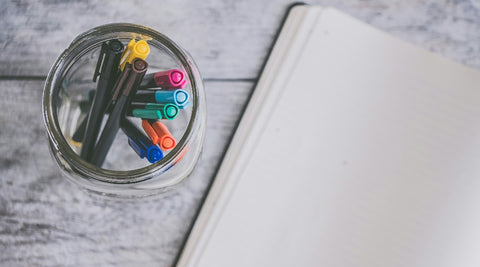
- Pencils: Mechanical or traditional pencils are great for sketching out layouts or making tentative plans that may need to be adjusted later.
- Washi Tape: Decorative washi tape can be used to add color and personality to your journal, create borders, or section off parts of a page.
- Stickers: Stickers can serve both decorative and functional purposes, such as marking important dates or categorizing tasks. A variety of sticker options are available to cater to your diverse requirements.
- Paper Clips: Clips can be used to keep your journal open to a specific page or to clip extra notes and materials to pages.
- Inkless Printer: It's surprising to find that incorporating an inkless printer can enhance the experience of traditional bullet journaling. Here are other advantages:
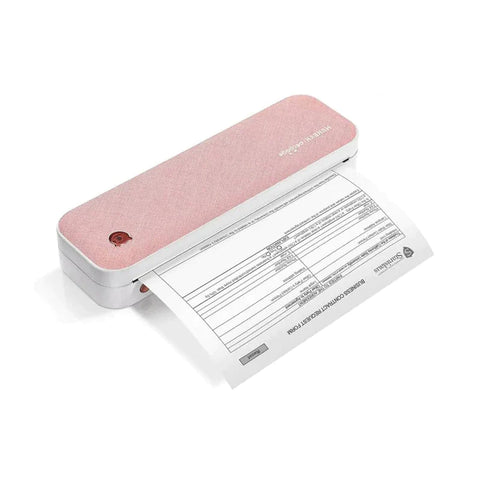
-
Quick Customization: With an inkless printer, you can quickly print out photos, templates, and designs to add to your journal as you anticipate, making the process efficient and saving time on manual drawing or writing.
- Consistencyand Professionalism: Printed elements ensure that your layouts are consistent throughout your journal. The uniformity across your journal's layouts contributes to a neat and polished look.
- No-ink Printing: Inkless printing technology offers the advantage of producing sharp and clean text and images that resist blurring. This not only ensures high-quality prints but also helps in cutting down printing expenses.
- Integration of Digital Tools: For those who use digital note-taking apps or project management software alongside their physical bullet journal, being able to print from these tools allows for seamless integration of both systems.
- Pre-made Templates and Stickers: There are many free and purchasable bullet journal templates and stickers available online that you can print and incorporate into your journal.
In general, assistant tools for bullet journaling provide practicality, creativity, and efficiency, enhancing the overall journaling experience and helping users stay organized and focused on their goals.
Wrap Up
A bullet journal is not just a planner—it’s a tool that caters to your individuality, encourages mindfulness, and keeps you one step ahead of life's complexities.
As you embark on this journey, consider enhancing your experience with an inkless printer, which can provide personalized stickers and templates to elevate your organizational prowess. Dive into the world of bullet journaling, and let it guide you toward a more organized, purposeful, and fulfilling life.

